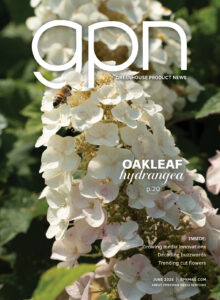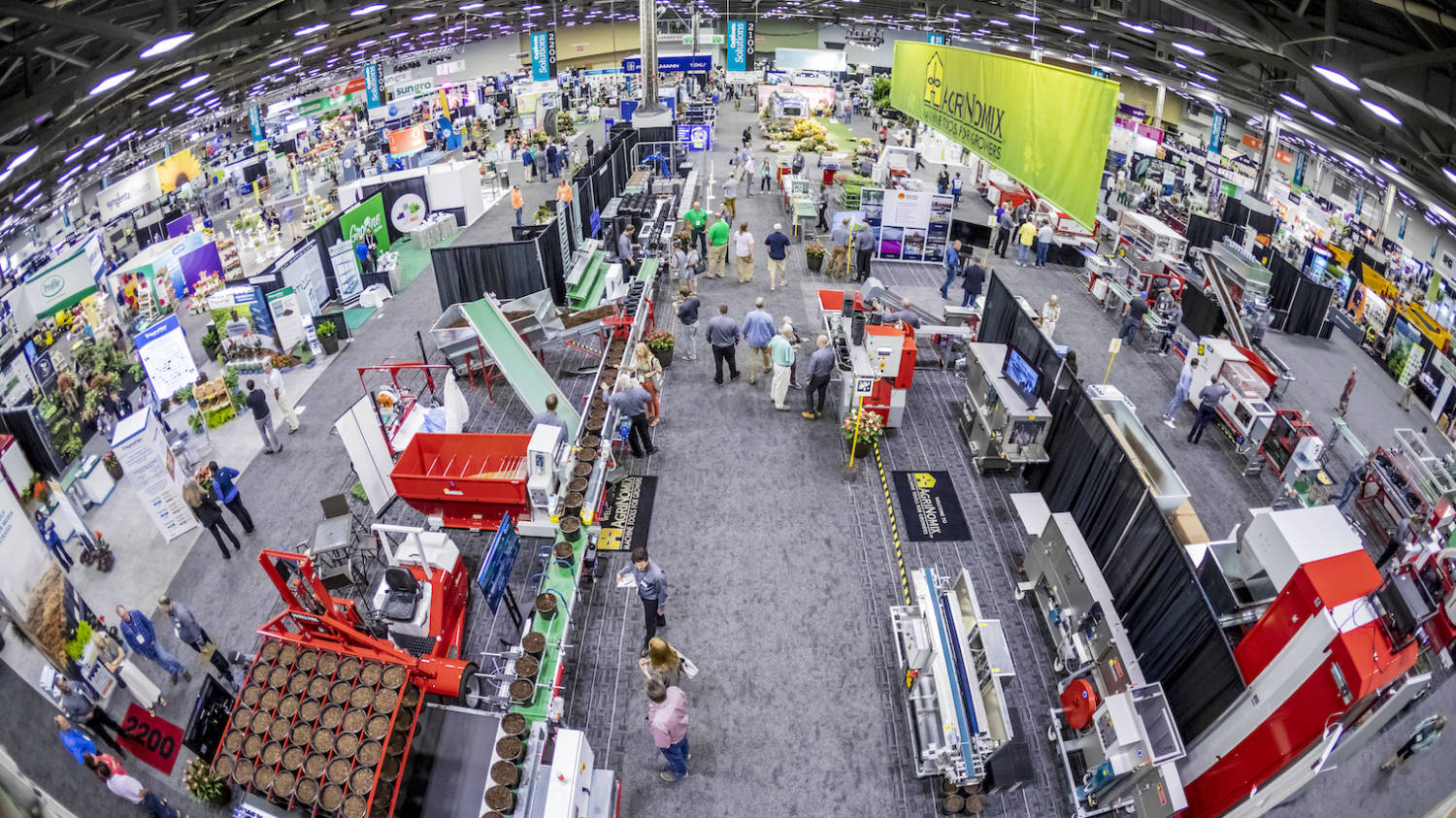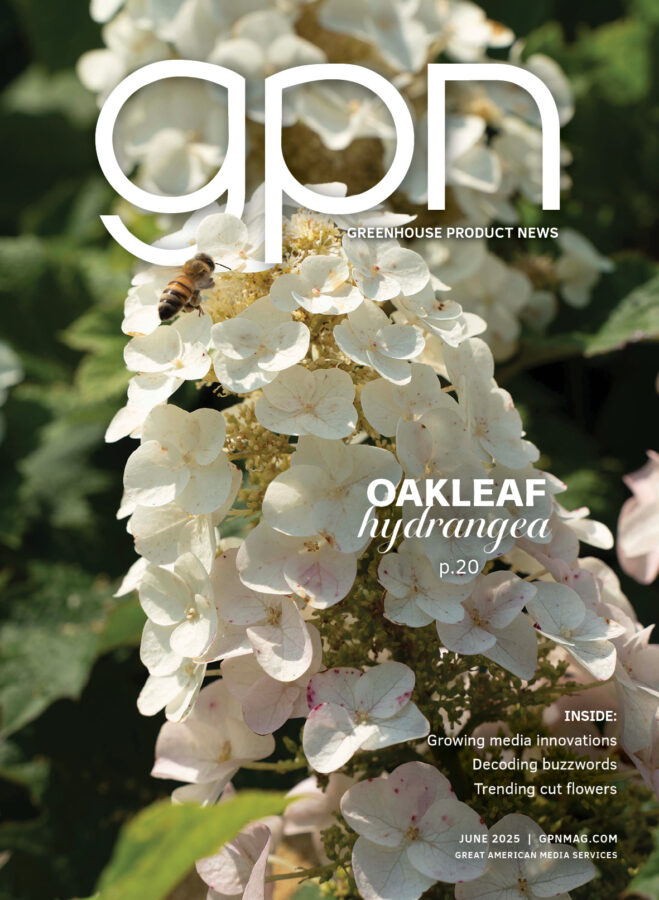Calculations for Water-Soluble Fertilizers and Injectors
Fertilizer recommendations are most often given in terms of the concentration of a desired element in the irrigation water. This concentration is expressed as parts per million (ppm). For example, you may use a 20-10-20 fertilizer on poinsettias to supply nitrogen at a concentration of 300 ppm. For this, we normally use a fertilizer injector and make a concentrated fertilizer solution. To do this, you must determine how much of the fertilizer to put in the concentrate tank (or stock solution) so the injector gives the desired concentration in the irrigation water.
Calculating for the Injector
Fertilizer injectors take fertilizer solution out of a concentrate tank and inject it into the irrigation water. If the injector ratio is 1:100, this means 1 gallon of fertilizer concentrate is added to each 100 gallons of irrigation water. The thing to remember in doing calculations for injectors is that the fertilizer will be at a higher concentration in the concentrate tank than in the irrigation water. Therefore, when the amount of fertilizer per gallon of irrigation water is known, multiply by the injector dilution to obtain the amount per gallon to put in the concentrate tank. For example, with a 1:128 injector and 0.3 ounces of fertilizer per gallon wanted in the irrigation water, multiply 0.3 ounces by 128, which equals 38.4 ounces of fertilizer per gallon in the concentrate tank. The same thing applies when injecting liquid fertilizers, acids or other liquid chemicals; multiply the volume per gallon wanted in the irrigation water by the injector dilution factor to obtain the volume to put in the concentrate tank.
Working with ppm
A difficulty we have in these calculations is that we can't weigh or measure "ppm." These calculations are made more difficult because our (U.S.) weights and measures are not based on the metric system. To convert weight and volume measurements to ppm, this is the standard equation:
1 ounce E / 100 gal water = 75 ppm
Where E is any soluble element
To make this simpler, there is an equation for converting between ppm of an element and oz of fertilizer. This equation is often written in two forms (Table 1). When the desired ppm of a particular element in the irrigation water is known, use Equation Form A to find how much fertilizer is needed per gallon of irrigation water. But when the amount of fertilizer being used in the concentration tank is known and one wants to find the ppm of an element in the irrigation water, use Equation Form B.
Note that there are several ways of doing these calculations. I use this method because it is important to understand what you are doing with the different steps. If you go to another source, the information may look a little different. As you do these problems, keep in mind when you are working with a formulated fertilizer and when you are working with ppm of a particular element. Also keep in mind when you are in the irrigation water and when you are on the other side of the injector in the concentrate tank. To help with this, I use the subscript "iw" to indicate irrigation water and "ct" for concentrate tank.
Example 1
This is an example of using Equation A to calculate the amount of a formulated fertilizer needed in the concentrate tank when the concentration desired in the irrigation water is in ppm of nitrogen. Assume you want 250 ppm of nitrogen using a 15-5-10 fertilizer and the injector is set at 1:200. Step 1 calculates the amount of fertilizer needed in the irrigation water to have a concentration of 250 ppm of nitrogen. Then, Step 2 determines how much 15-5-10 to put in the concentrate tank. (galct is one gallon of water in concentration tank).
ppm
Step 1. oz F/galiw = ÑÑÑÑÑÑÑÑ
75 x 100 x df
250
oz F/galiw = ÑÑÑÑÑÑÑÑ
75 x 100 x .15
oz F/galiw = 0.22
Step 2. oz F/galiw x 200 = 44 oz F/galct
So, you put 44 oz (2.75 lbs.) of 15-5-10 fertilizer per gallon in the concentration tank to achieve 250 ppm of nitrogen in the irrigation water.
Example 2
In situations where the amount of fertilizer used in the concentrate tank is known, but the ppm of an element in the irrigation water is needed, Equation B is used. For this example assume that STEM is used to supply microelements and that you want to determine how much iron is supplied in the irrigation water. Assume the amount of STEM in the concentrate tank is 8 ounces per gallon and the injector ratio is 1:100. The STEM label indicates that it contains 7.5 percent iron. Step 1 finds the amount of STEM injected into the irrigation water, and Step 2 determines the ppm of iron in the irrigation water.
Step 1. 8 oz STEM / galct -:- 100 = .08 oz STEM galiw
Step 2. ppm = oz F/galiw x 75 x 100 x df
ppm of iron = .08 oz STEM /galiw x 75 x 100 x .075
ppm of iron = 45
So, the 8 ounces of STEM per gallon in the concentrate tank results in the irrigation water containing 45 ppm of iron.
Example 3
The formulas do not apply only to formulated complete fertilizers. They can be used with any chemical supplying a desired element as this example shows. Assume you will use potassium nitrate (KNO3) to supply 150 ppm of potassium in the irrigation water and the injector is set at 1:128. KNO3 is 44 percent potassium and 14 percent nitrogen. You need to know how much KNO3 to put in the concentration tank.
ppm
Step 1. oz KNO3/galiw = ÑÑÑÑÑÑÑÑ
75 x 100 x df
150
oz KNO3/galiw = ÑÑÑÑÑÑÑÑ
75 x 100 x .44
oz KNO3/galiw = 0.045
Step 2. 0.045 oz KNO3/galiw x 128 = 5.8 oz KNO3/galct
Therefore, to have 150 ppm of potassium in the irrigation water, put 5.8 ounces of potassium nitrate per gallon in the concentration tank.
Example 4
This is another example of where Equation B is used. You are fertilizing with a 15-5-15 Cal-Mag fertilizer and are putting 27 ounces of fertilizer per gallon in the concentrate tank. You need to know how much calcium (Ca) is also supplied by the 15-5-15 fertilizer. The label tells you it contains 5 percent Ca. Your injector ratio is 1:200.
Step 1. 27 oz F / galct -:- 150 = .135 oz F/galiw
Step 2. ppm = oz F/galiw x 75 x 100 x df
ppm of Ca = .135 oz F/galiw x 75 x 100 x .05
ppm of Ca = 50
This means that the 27 ounces per gallon of 15-5-15 Cal-Mag fertilizer in the concentrate tank is supplying 50 ppm of calcium in the irrigation water.









 Video Library
Video Library 


















